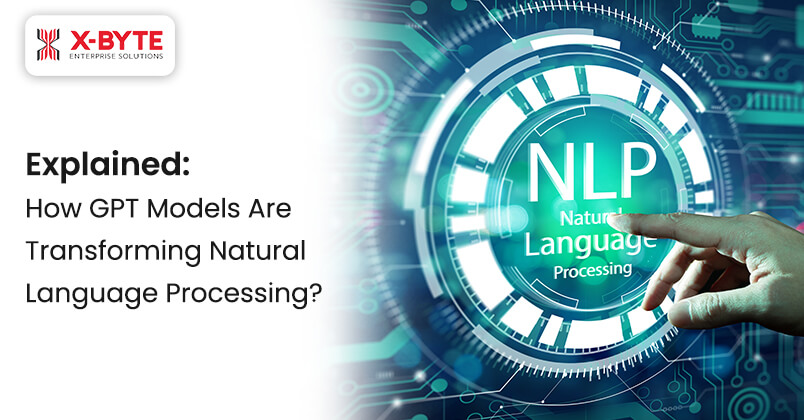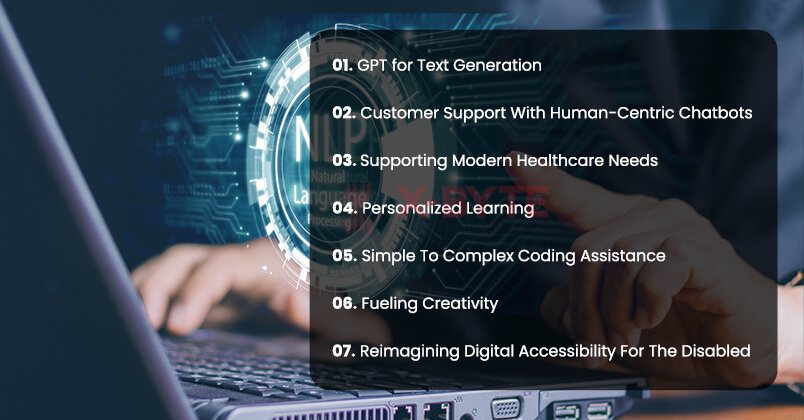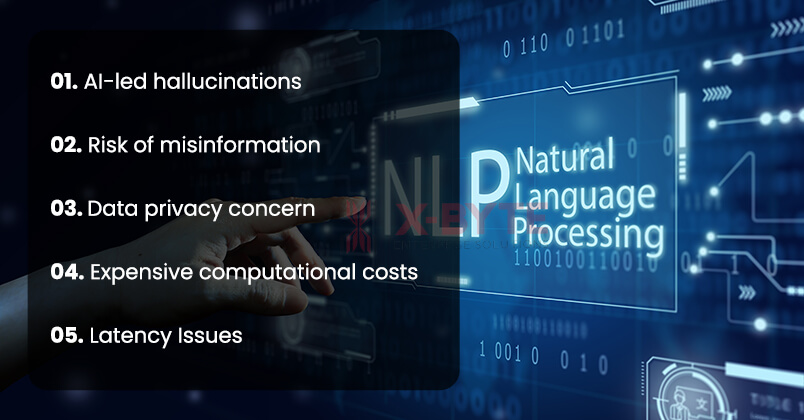-
solutinos
-
Hire
Frontend Developer
Backend Developer
-
NodeJS Developer
-
Java Developer
-
Django Developer
-
Spring Boot Developer
-
Python Developer
-
Golang Developer
-
Ruby on Rails Developer
-
Laravel Developer
-
.NET Developer
Technology
-
Flutter Developer
-
React Native Developer
-
Xamarin Developer
-
Kotlin Developer
-
Cross-Platform Developer
-
Swift Developer
-
MongoDB Developer
-
C Developer
-
Smart Contract Developers
Cloud
-
-
Services
Mobile Development
Web Development
- Work
-
Multi Services App
-
Food Delivery App
-
Grocery Delivery App
-
Taxi Cab Booking App
-
Multi Services App
-
OTT Platform APP
-
Social Media APP
-
Freelance Service App
-
Car Rental App
-
Medicine Delivery App
-
Liquor Delivery App
-
Sports Betting App
-
Online Coupon App
-
eLearning App
-
Logistics & Transportation App
-
Courier Delivery App
-
On-Demand Real Estate App
-
E-Wallet APP
-
Online Dating App
-
Handyman Services App
-
-
Process
-
Company

Quick Summary : GPT models, the most advanced LLM models based on natural language processing, have changed the parameters of how machines understand, interpret, and interact with human language. Generative models can now create images from text prompts. This has changed many areas of NLP use across different industries. The future of Natural Language Processing is indeed promising, and advanced GPT Models strive to deliver a rich and inclusive experience by powering functional human-machine interactions.
Whether it's composing a Shakespeare-style love sonnet or optimizing the content of your website for SEO, there's nothing that NLP can't do. And with new-age GPT models, NLP is pushing the status quo for human-machine connections like never before. Natural language processing is when computers analyze language and interpret the meaning. In that context, GPT is an NLP model only. However, GPT models are highly advanced in natural language processing and can work very well even with highly unstructured and obscure language.
As a leading machine learning development services provider, our experts at X-Byte offer deep insight into the transformative impact of GPT training models for NLP and explore real-world applications, benefits, challenges, and ethical considerations for a rewarding future. Keep reading!
Breaking Barriers With GPT Evolution
Developed by OpenAI, GPT models use the Transformer architecture to process and generate human-like text that is easy to understand and work with. The continuous improvement in GPT training techniques has led to these remarkable advancements. From GPT-1 to the latest GPT-4 LLM model, AI ML development services have created these transformative models that have witnessed an exponential increase in capability and complexity.
Take GPT-3, for instance. The model was introduced in 2020 with about 170 billion parameters, expanding its task-performing capability from basic text generation to writing complex codes. Over time, new-age GPT models demonstrated significant proficiency in translating text in different languages. In doing so, they dramatically enhanced accessibility and cross-cultural communication.
This February, the Federation of American Scientists (FAS) went ahead with their RFI issued by the Office of Science and Technology Policy to develop a functional Artificial Intelligence Action Plan. This is in line with the vision set forth by the new Trump administration to cement America’s leadership using a pivotal technology. Extended research from Hugging Face and FAIR (Facebook AI Research) has also depicted how transformer-based multilingual models continuously outperform conventional statistical machine translation systems.
How GPT Models Improve Natural Language Understanding?
GPT is an LLM model. These generative pre-trained transformers are trained on massive datasets (generally, the dataset is unlabeled and self-supervised). GPT models are trained to produce generalizations with adaptable output. To put it in perspective, one gigabyte of data can contain up to 175 million words.
LLMs are trained on millions of gigabytes. Yes, we are talking about Petabytes here. Here words can be termed as a parameter. And LLMs are giant models that use millions of parameters to learn independently. The complexity and prowess of GPT models are dependent on these parameters. More parameters mean a more powerful GPT model.
Once trained, it can handle a sequence of data like sentences, phrases, prompts, commands, etc., by considering the phrase in the context of the word sequence. Trained models can predict the next word in the sequence and generate coherent sentences. This helps these GPT models generate articles, social media posts, emails, YouTube video scripts, and even software codes.
GPT (Generative Pre-trained Transformer) is indeed an advanced type of Natural Language Processing (NLP) model.
- NLP Foundation: GPT has its roots in Natural Language Processing, an AI field that aims to make computers understand, interpret, and produce human language. GPT is one of the most advanced AI language models.
- Transformer Architecture: GPT relies on the Transformer architecture, which came out in 2017. This structure has changed the game in NLP by bringing in self-attention systems. These systems let the model weigh how important different words are in a sentence when it processes language.
- Pre-training: GPT models learn from huge amounts of text data, which helps them learn general language patterns.
- Generative Capabilities: GPT models can create text that sounds like a human wrote it. This sets them apart from NLP models that focus on specific jobs like sorting or translating. But GPT models go beyond; they can be used to interact.
- Size and Complexity: The bigger versions of GPT models, such as GPT-3 and GPT-4, are among the largest and most intricate language models ever built. They push the limits of what NLP can do.
Real World Applications of GPT Models Transforming Natural Language Processing

The real strength of GPT models for NLP is not just about the architecture but its real-world utilization. Whether facilitating medical diagnostics or automating customer support, GPT-powered tools developed by top machine learning development services are at the center, driving more value to a business. Here's a closer look at some of the real-world examples of GPT models transforming natural language processing across different verticals.
GPT for Text Generation
Content creation is undoubtedly one of the biggest businesses in the world today. According to a leading industry report, the global digital content creation market was valued at USD 32.28 billion in 2024 and is poised for a 13.9% CAGR by 2030. This is where GPT models play a significant role. From creating on-demand memes to writing articles and ad copies, it caters to all kinds.
For example, the famous British daily, The Guardian, admittedly used GPT-3 to write a full-fledged article, thereby showing its potential to impact mainstream journalism. Several others followed suit, which shows that GPT models for NLP can not only fast-track content production but also personalize content creation.
No wonder tools like Jasper and Copy.ai are becoming increasingly popular with marketers and bloggers alike. From social media captions to rich product descriptions, these tools have become a norm to drive efficiency like never before.
Customer Support With Human-Centric Chatbots
If there's one vertical where GPT models have transformed experiences beyond expectation, it's got to be customer support. Full credit goes to new-age chatbots that can fire up resolutions as users type in their needs. These chatbots can not only handle multiple queries at once but also offer near-accurate responses without actual human intervention.
One of the glaring examples is the American insurance brand Allstate, which embraced GPT models to write better customer emails that were to the point, empathetic, and without jargon. Companies like Intercom, Amazon, Ikea, and more have also integrated GPT models across their pre-existing systems to bring down average customer wait times and even deflect over 50% of trouble tickets with self-service features.
Ready to leverage NLP for your organization with advanced Gen AI Chatbots?
Supporting Modern Healthcare Needs
GPT models are being widely used for advanced patient care and diagnostics needs. Multiple studies have shown how NLP can be used to gain more insight into patient symptoms and render effective care. However, one must remember that this approach is only supportive, more of an aid, and never a replacement for conventional, human-led treatment, where expertise and experience are needed in tandem.
Reportedly, the leading American academic medical center, Mayo Clinic, conducted a series of controlled trials in 2023 using GPT-4. This included ingesting patient data, which reduced almost 40% of the time spent creating critical clinical summaries. So, it helped physicians to shift their focus to planning the proper treatment and charting the road to patient recovery.
Personalized Learning
Academic institutions are fast leveraging GPT models using NLP to enhance personalized tutoring. In 2023, Chegg Inc., one of America’s leading edutech companies, introduced “CheggMate” to create personalized learning pathways. It includes periodical tests for students, unique quizzes to check their acquired knowledge, and relevant learning concepts. This new AI learning companion also allows students to input their queries in different formats- text, image, photo, mathematical equations, and even diagrams.
Another great example is the popular foreign language learning tool Duolingo. Using GPT-4, this tool helps simulate conversational foreign language practice. The immersive scenarios it creates further enhance the effectiveness of learning by boosting knowledge retention power and overall confidence.
Simple To Complex Coding Assistance
GPT models with NLP are the newfound love for developers, especially rookies. Advanced GPT-3 tools like GitHub Copilot have been game changers with their suggestive code snippets. Such tools have accelerated the code generation process and serve as a practical learning source for young programmers still learning new frameworks and languages. A 2023 survey showed that over 45% of CoPilot users experienced faster code development cycles, while more than 25% saw marked improvement in code quality.
Fueling Creativity
Today, many artists, poets, lyricists, and designers are bent on exploring GPT models in their line of work. it's a befitting collaboration between humans and AI translating into new horizons of creativity. Earlier, there hasn't been a better window to express oneself or let half-baked ideas remain in isolation.
Award-winner artist Ross Godwin and filmmaker Oscar Sharp reportedly utilized an early GPT model to write the script for their sci-fi movie "Sunspring." This is indeed a remarkable feat that bolsters the essence of GPT models and is a cue for a rewarding, creative future.
Reimagining Digital Accessibility For The Disabled
Similar to other avenues, GPT models play a pivotal role in digital accessibility, especially for people with disabilities. Advanced GPT-4-powered tools like Be My Eyes offer real-time descriptions, significantly impacting image recognition capabilities for blind people or those with poor vision.
GPT models also play a principal role in auditory needs. These modern tools are capable of generating real-time, accurate captions for any audio content. This helps make information a lot more accessible to the hearing impaired or people dependent on hearing aids. All descriptions are downright contextual, and the transcriptions are kept relevant to boost inclusivity.
Lastly, for those with cognitive disabilities, GPT apps can seamlessly simplify texts by summarizing information in simple language. This, in turn, helps special learners comprehend things faster and engage more with digital content.

Take the Way Forward For Natural Language Processing With X-Byte Solutions
Hire our ML Development services! Hire our ML Development services!Benefits of GPT Models in NLP
Based on the above real-life applications of GPT models, let's see their benefits for further advancements in Natural language processing.
|
Enhanced Language Understanding
|
Versatile Text Generation
|
Efficient Language Translation
|
|
Advanced Conversational AI
|
Information Extraction Excellence
|
Improved Sentiment Analysis
|
Challenges, Limitations, and Ethical Considerations

Undoubtedly, the advancements witnessed with GPT models powering natural language transformation are amazing. However, the inherent challenges and ethical considerations can't be overlooked.
AI-led hallucinations: One of the most pressing challenges with GPT models remains their tendency to hallucinate. It means generating information that looks plausible but has a high chance of being incorrect or irrelevant. Thus, in many sensitive cases, it can undermine trust. GPT-3.5 often became the center of criticism for its hallucinating information in 2023 until GPT-4 came in 2025, when the hallucination rate was reduced from 3.5% to 1.8%.
Risk of misinformation: Some of the earlier GPT models have earned a notorious reputation for generating inaccurate content, thereby boosting the spread of misinformation.
Data privacy concern: To train GPT models effectively, you need extensive data across different subjects. This elevates the risk factor for data privacy and the misuse of sensitive information.
Expensive computational costs: GPT model training and deployment would require significant resources, thereby increasing operational costs.
Latency Issues: As efficient as the newer GPT models get, their working mechanism will become more complex. This leads to real-time latency affecting user experience.
Future of Advanced GPT Models in Natural Language Processing
First, GPT models have changed conversational AI. Chatbots and virtual assistants now interact with people. Second, they've transformed content creation. AI can now write clear, relevant text on many topics. Third, they've improved language understanding. These models now grasp subtle meanings, context, and even cultural references with amazing accuracy.
These advancements influence the quick expansion of the NLP market. Experts predict the NLP market share to hit $43.29 billion by the end of 2025 up from $3.18 billion in 2017 – a huge 14-fold jump in under 10 years.
This fast growth shows how GPT models can change things and how they're useful in many fields. ChatGPT gained one million users in just 5 days and 100 million users in just a two months. What's more, the global conversational AI market, which depends a lot on NLP progress, will reach $39.55 billion by 2031. Looking forward to 2025 and beyond, GPT models will keep changing NLP in big ways.
We'll see more models that focus on specific industries and jobs, more ways to mix different types of data for better interactions, and a bigger focus on making AI ethical to avoid unfair treatment. Also, work to make NLP better at handling many languages will lead to more accurate translations for less common languages and a better grasp of local ways of speaking and cultural differences. The rapid advancements in language processing in AI are set to redefine human-machine interactions in the coming years. These steps forward will keep pushing what's possible in natural language processing.
Conclusion
So, you see how GPT models are redefining the possibilities of Natural Language Processing. Their unmatched ability to analyze, generate, understand, and manipulate ways in which humans converse is transforming industries all over. However, to make things happen, you need a worthy solutions partner. Someone who can cut through the chaos and find a way to beat the limitations of GPT models for Natural Language Processing. That's where we come in.
At X-Byte Solutions, we are known for providing expert machine learning development services to power organizations’ natural language processing needs. This has helped businesses fully utilize the GPT models in comprehending languages and making it easy to give and receive instructions.
From transcription to text analysis, we have effectively covered the whole range. Our robust verification mechanism, advanced data collection techniques, and seamless adherence to industry regulations make us the best in class.
